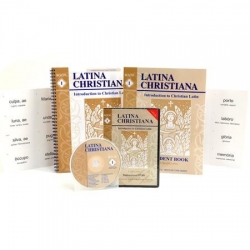- Curriculas
- Latina Christiana
Latina Christiana
HotGeneral info
Type of product
Publisher
Price
Subject
- Latin
Grade Level
Learning Style
Religious Affiliation
Media Type
Teach Latin even to younger, beginning students with Latina Christiana! Clear explanations, easy instructions, and step-by-step approach have led thousands of teachers and students to actually enjoy the experience of learning Latin. This one year course is designed for parents and teachers with no Latin background. For students as young as 3rd grade. Includes workbook, pornunciation CD, flashcards, instructional DVDs, and teacher's manual.
User reviews
3 reviews
My girls enjoyed this program very much. The video and CD helped me teach it to them. A quality program, I will definitely use more products from this company.
Grade levels used
- 5
- 6
- 7
Pros
complete program
Do you recommend?
Yes
D
Deborah
This is a great program and offers a video, text, pronunciation/memory work CD, and much more. My children enjoyed the program.
Grade levels used
- 4
- 5
- 6
- 7
- 8
Pros
Video is very helpful
Do you recommend?
Yes
LV
Lori V
I'm an adult using it to learn Latin and it is great at explaining everything. It does get progressively more challenging, so learning is always taking place.
Grade levels used
- 3
- 4
- 5
- 6
- 7
- 8
- 9
- 10
- 11
- 12
Pros
It is very complete.
Do you recommend?
Definitely!
T
Tanya

